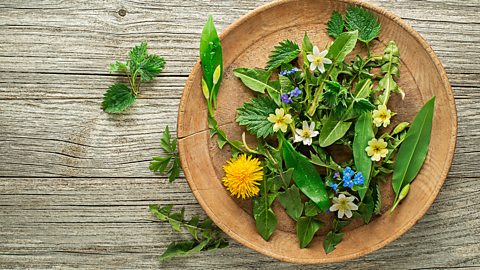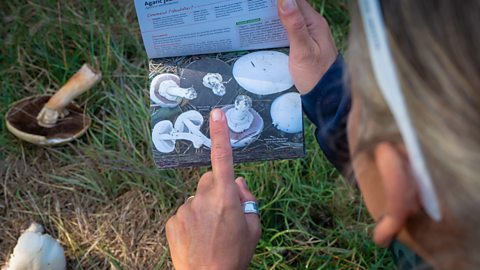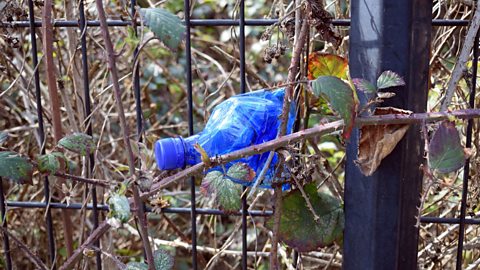How to spring forage safely
Gone are the days where foraging had to involve a trip to the countryside. Urban foraging is on the rise and spring is the perfect season to get started.
As warmer weather arrives and we find ourselves spending more time outside, foraging becomes even more enticing. While autumn, with its nuts, berries and mushrooms – gains the most attention, spring is just as fruitful (no pun intended). From nettles to wild garlic and the excitingly-named hairy bittercress, there’s plenty of produce growing wild which is ripe for picking. Our local parks, gardens and hedgerows are home to edible treats too. So how can you make the most out of the spring and early summer foraging season and stay safe at the same time?
What you can find in spring and early summer

Wild garlic
The unmistakeable smell will guide you to an abundance of wild garlic in shady woodland throughout March and April and there’s no shortage of recipes you can make from it. The easiest is wild garlic pesto – just blitz a few ingredients in a blender/food processor and you’re done. In addition to pasta, you can use your pesto in other dishes such as this Tuscan soup. This free ingredient is beloved by Michelin-starred chefs – see Tom Kerridge's posh mushrooms with wild garlic on toast and Marcus Wareing's creamy chicken with wild garlic.
Dandelions
Gardeners can finally get their revenge on this weed, but only when the leaves are young and tender. Italians use it regularly to garnish, as in Theo Randall's grilled sirloin with salsa verde or combined with other greens as in Gennaro Contaldo's Easter spinach pie. Or add a different flavour to British classics. The bitter leaves complement this tangy warm potato salad with shallot dressing and other rich, salty and sharp dishes like gammon or a cheese soufflé.
Nettles
For obvious reasons, you’ll want to wear gloves while picking these, but as soon as they’re cooked/boiled they’ll lose their sting. Use the tender tops of the plants when they're young to avoid stringiness. This risotto of nettles and wild herbs makes the most of the spring foraging season. Mix in nettles with spinach or other seasonal greens in a flexible filo pie or soup.
Elderflower
It’s not just savoury ingredients found in spring, elderflower comes later in May. Pick the flowers early in the morning before the sun warms the flowers too much, making the scent more feline than fresh. You only need to cut a few handfuls of flowers to make a homemade elderflower cordial that can then be used in a variety of dishes such as: Nigella’s lemon and elderflower pudding or Mary Berry’s frozen elderflower posset.
Now want to head outdoors and get foraging? We spoke to Bristol-based urban forage expert, Martin Bailey who told us his top tips for staying safe, while getting the most out of foraging.
Know the rules

Urban foraging involves finding plants and fungi that have grown wild in a hedgerow along a path, in a local park, or overgrown lane. Legally speaking, Martin explains: “Some plants – such as Bristol rock cress and arabis scabra – are protected, and you can't pick them. It's also illegal to uproot any plant without a landowner’s permission in the UK.” Martin points out that people do have the right to forage for personal use from public land.
Martin also explains that, in addition to rules, there are foraging codes of conduct.
“Do what feels polite, like asking permission to pick things from a place is just good practice… Also be sensitive. For example, in a park there are planted areas, and it would be a bit off to go and pick where someone's obviously planted vegetables or plants – where you don't know the intention.
“But if it's weeds, like dandelions from an area that's a little bit more overgrown, or a wooded area with wild garlic that's likely grown by itself, then you’re probably ok picking that.”
Martin explains you shouldn’t over-pick either, just go for enough for a meal. “All good foragers think about the ecology. Consider what possible harm you might cause the environment if you're picking lots of things. Because you never know what moth or butterfly might be laying eggs in certain plants.”
Related stories
Is it safe?
If anything is going to put you off the idea of foraging, it’s the prospect of accidently poisoning yourself. And, it’s not something you should be blasé about either. There are very real risks – especially when it comes to mushrooms/fungi]. However, there are potential risks with plants too.
“When I’m giving walks, I tell people about a mistake I made when I was younger, because it’s a really important point and I was lucky there wasn’t an awful outcome.
“I picked a leaf [of the poisonous plant] lords and ladies – which often grows amongst wild garlic – thinking it was the common sorrel. If you're paying attention and know what to look for… holding the leaves side by side, you’d spot the differences, but I'd picked it before it developed its features. I popped it in my mouth, chewed it and I got a tingly feeling, and knew it wasn’t right and spat it out. I was lucky that I’d only put a tiny bit in my mouth to taste, it could have hurt me a lot. And there’s some plants that could kill you with moderately, small amounts.”
Martin’s top safety tips
The number one rule
“Don't think about eating or popping anything into your mouth, or even taking a tiny nibble of something, until you're 100 percent sure what it is. Don’t let the thoughts of others or your own lead you astray. It's very easy to think ‘well the dog’s eating it’ or ‘I'm sure grandma used to eat those mushrooms’… You need to catch yourself. Don't eat anything you're not 100 percent sure about.”
This includes having multiple resources in order to check your findings. “You want to have several decent guidebooks or resources (at least) to cross reference, that's crucial. Never trust just one. Books and apps can get it wrong in my experience.”
Learn from an expert
“You can pay and go on a walk with somebody like me, who can show you a plant growing in its preferred habitat with it’s particular smell and three-dimensionality… Or there are lots of groups you can join where people can help and offer advice. For example in Bristol there’s a Meetup group as well as a WhatsApp group for Bristol foragers.”

Take your time
“You're analysing and comparing, and cross referencing so take your time… There's no guarantee that you'll learn about a plant at the same rate as somebody else. We all perceive things differently. So be sensitive to how you learn as well as everything else.
“Likewise, there are plants that will take you seven years or so to master, so begin by sticking to easy plants, things like nettles and wild garlic”.
“We have to use all our senses – not just our eyesight… Using a couple of guidebooks for advice, you can check ID features against the specimen in front of you."
What are the visual clues? “Does a plant have a jagged edge? Does it have backwards facing lobe? Does it have veins radiating out in all directions or just one central vein? What size is it?”
How does it smell? “Every plant has a smell (though for some plants it is very faint) and that's a key identifier. For example, does it smell like apricot? Do the books say it smells like apricot? That said, when doing your research, remember smell can be subjective.”
How does it feel? “Does it feel soft? Does it feel cold? Does it feel hairy? Is it bristly?"
Don’t be swayed by the plant’s ‘family’
“Plants fall into categories and families and while some in the same family may be edible, others could be deadly. For example, we’ve got the carrot family, which has the easy to identify fennel. But then there's much harder ones to identify like hemlock water dropwort which is deadly poisonous and does look quite like celery.
“There’s another hemlock, which Socrates died from eating, that looks really similar to cow parsley. Hemlock will kill you, cow parsley is edible. There’s no substitute for years spent going through the seasons learning those and other plants. You need to get to know them intimately to be safe.”
Consider what’s growing amongst plants you can forage
“At the moment, everyone will be picking wild garlic but not everyone will know that there are other plants that grow very close to it, there’s ivy, lords and ladies and hemlock water dropwort.”
Be careful of skin irritants
“You don't want to touch certain plants such as hogweed – you can get painful blistering. Even if you’re picking nettles, you’ll want to wear gloves.”
Do admin as you go
“A top tip is do your plant admin outside, as it's much more enjoyable. If you’re picking individual leaves of say wild garlic, rather than handfuls, you’ll be less likely to pick up nasties. You need to do this mindfully, not thinking about the pesto you’re going to make when you get home but checking each leaf before you put it in your Tupperware or your basket. Then you do a second check when you wash the leaves when you get home. Just in case, I wash most things twice in water, which acts as a third check. So it's thorough.”
Environmental problems you might encounter

Even if a plant is perfectly edible, think about its surroundings. “Certain herbalists and foragers that I've worked with have a keep-10-metres-away-from-a-busy-road rule, which I've also adopted. Also, think about how accessible a spot is to other environmental issues. If for example I was in a public park where there was a post which lots of dogs would pass, I probably wouldn’t pick dandelions from near it, because there’s the risk of dog pee, or just general rubbish. I could instead be looking towards the edge of the park or behind a hedge.”
Martin adds: “Blackberries can suck up toxins through their roots, so even though we don't have lead in the petrol anymore, that’s an extra reason not to pick lots which are near a busy road.” If you’re worried about other toxins, such as whether a land might be classified as contaminated, your local council will be able to advise.